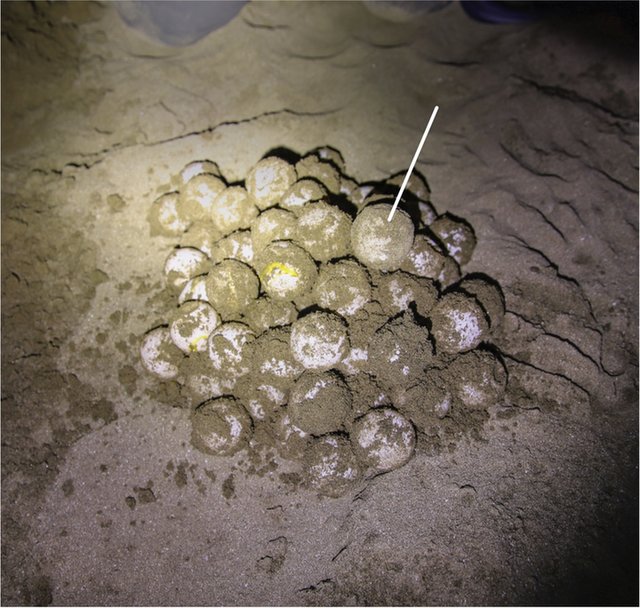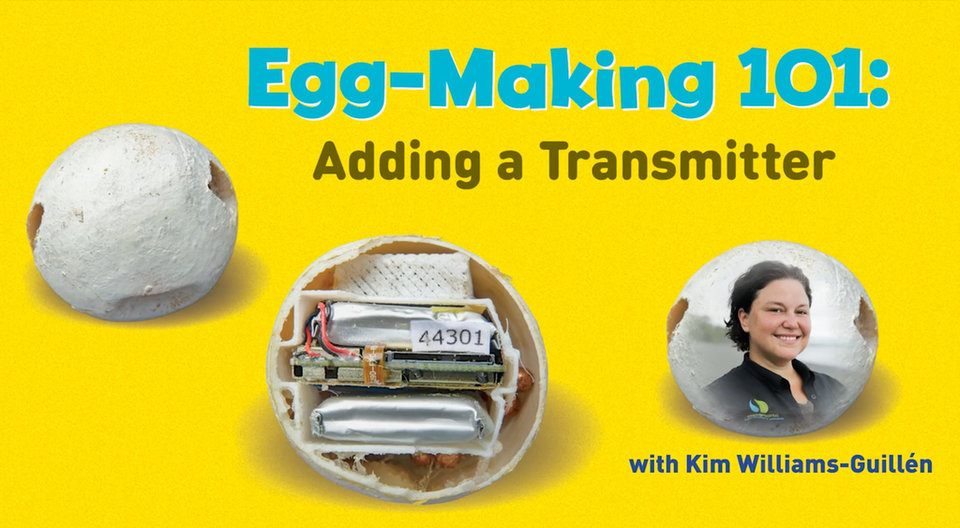Lookingfor
aSolution
KimWilliams-Guillénisanecologist.She’salsothedirectorofconservationscienceforPasoPacífico.Thegroupprotects biodiversityinCentral America.
Sheknewseaturtleeggswerepoached,buttherewassomuchshedidn’tknow.Wheredidthepoachersgo?Whowasbuyingtheeggs?Sheneededawaytotrackthepoachers.Whatifshecreatedafaketurtleeggwithatrackingdeviceinit?Whatifsheputitinafreshseaturtlenest?Ifitlookedrealenough,poachersmightnot notice.

KimWilliams-Guillénholdsfaketurtleeggswithtrackers inside.
atime-lapsevideoofegg printing
ANewIdea
PasoPacíficosubmittedthisideatotheWildlifeCrimeTechChallenge.Itwasselectedin2016asoneof16winnersoutof300applicants.Theprizemoneywasusedtohelpdevelopthefirstprototypeforthefake eggs.
ArealseaturtleeggisaboutthesizeofaPing-Pongball.Ithasasmalldentinit.It’snotcoveredinahardshell.Instead,it’sslightlysquishy.Togetanalmostrubberyfeel,Williams-Guillénneededtofindtherightsortof plastic.
Shetestedseveralmaterialsbeforefindingtherightone.Sheuseda3-Dprinter toproducethefakeegg.Butitstilldidn’tlookquiteright.Inarealegg,theyellowyolkalmostshinesthroughthethin,white shell.
Williams-Guillénknewsheneededhelp.So,shecontactedLaurenWilde,aspecialeffectsandmakeupartistinLosAngeles.Wildetooktheprintedeggsandsandedthemtomakethemsmooth.Thensheappliedcoatsofpaintandgluetogettheright color.
Fromtheoutside,thefakeeggslookalmostidenticaltorealones.Butontheinside,thefakeeggispackedwiththekindofelectronicsyoumightfindinacellphone.Theyconnecttotheinternet.Theyrevealthedateandtimethattheeggisatacertain location.
LaurenWildeinspectsoneofthefakeseaturtle eggs.


HollywoodmakeupartistLaurenWildeusespaintandglueonthefakeeggstomakethemlook real.

Thefakeeggsarehardto spot.
Onewasplacedontopofthis nest.
Notonlycantheteamtracktheegg,theycanalsofigureouthowfasttheeggismoving.Thatmayhelpthemdeterminethekindoftransportationusedtomovethe egg.
Eachfakeeggcostsabout$40tomake.AndWilliams-Guillénneededseveraltotestinthefield.Luckily,PasoPacíficowasawardedanotherprizetofurtherdevelopthe project.
Eachfakeeggweighsasmuchasarealegg.However,itisstuffedwithatracking device.




